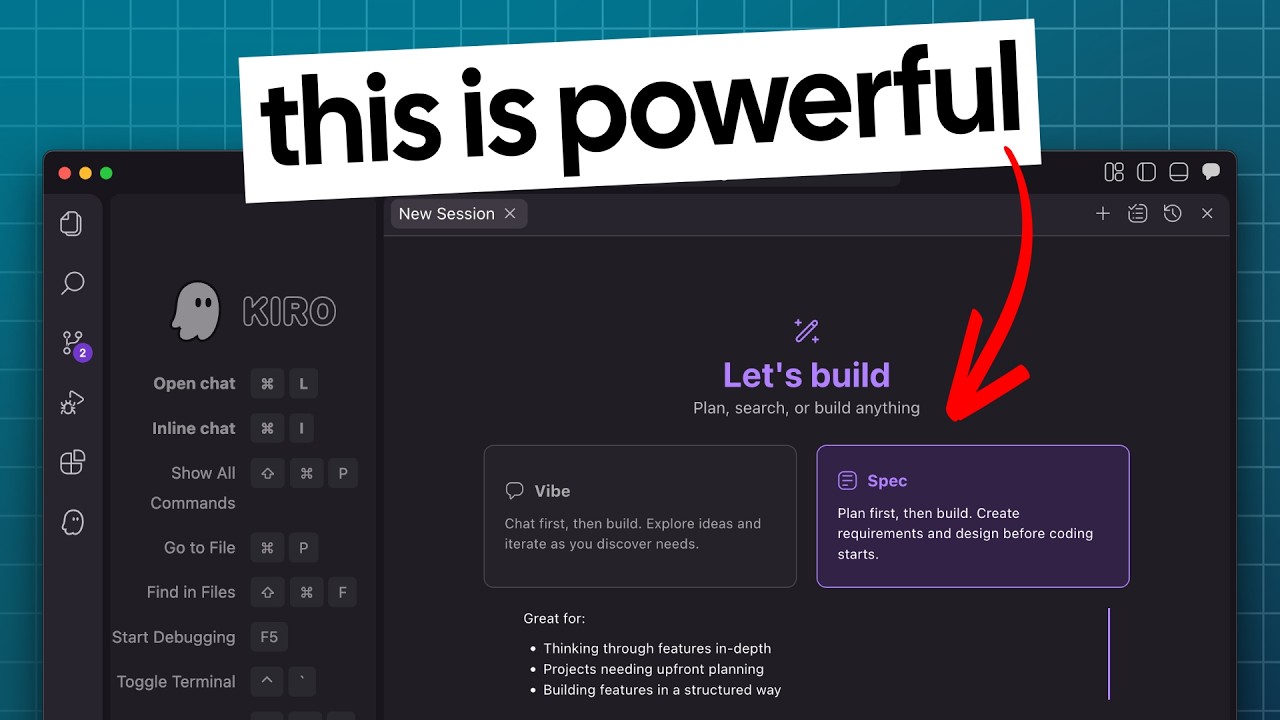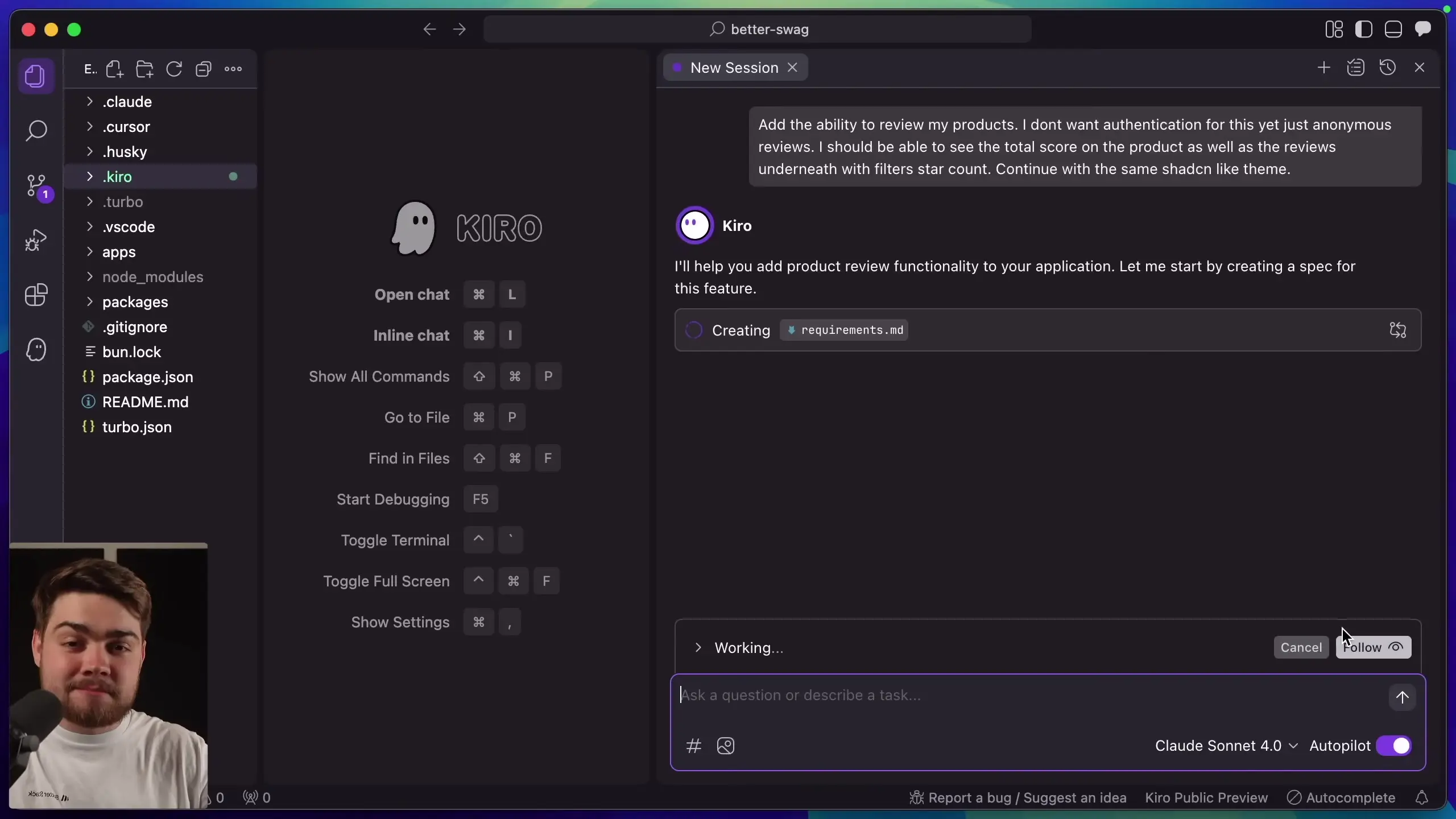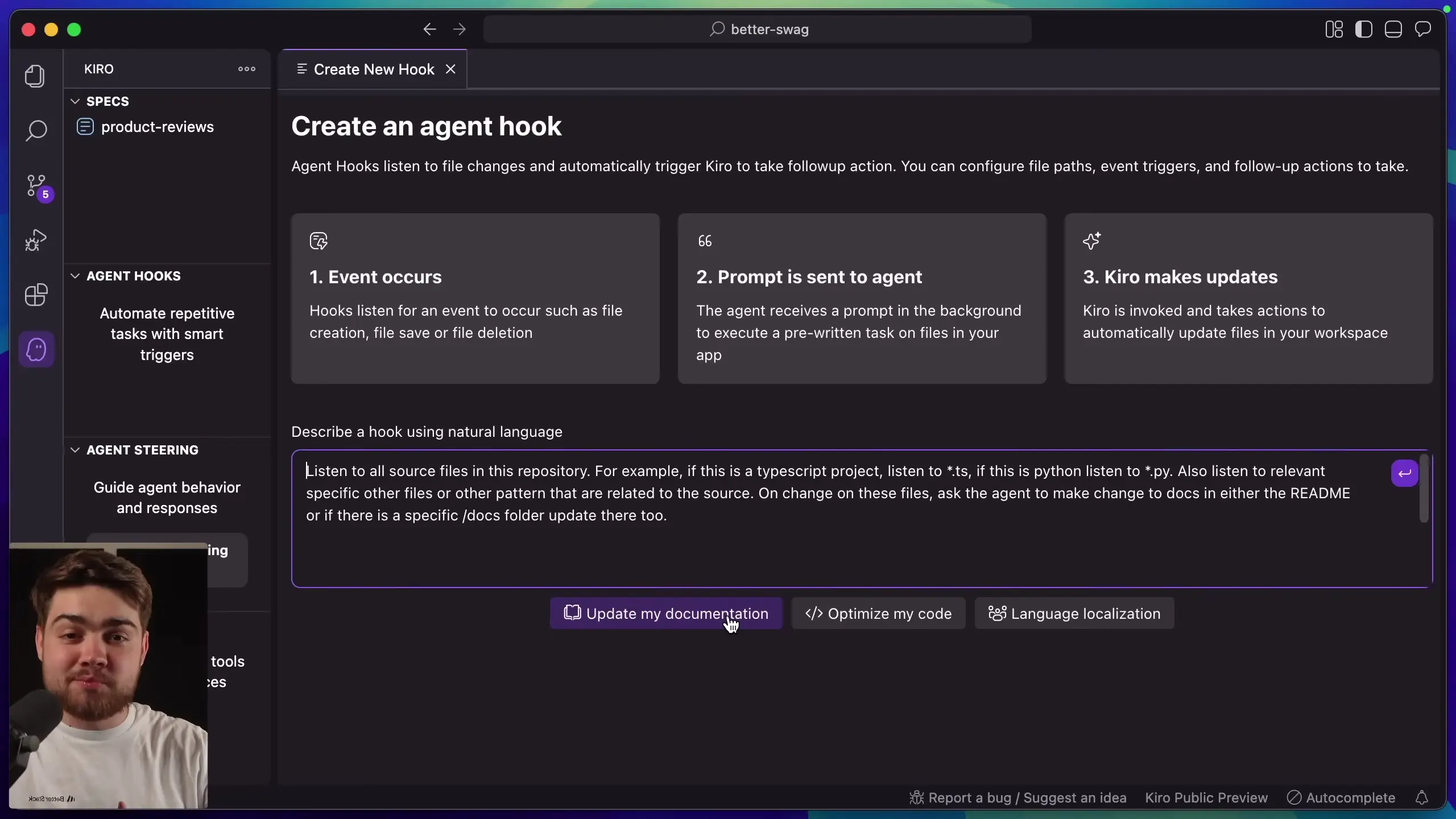
The landscape of AI-assisted development tools continues to evolve rapidly, with Amazon joining the race through their new offering, Kira. Unlike other AI coding assistants, Kira introduces a novel approach called 'spec-driven development' that promises to bring much-needed structure and clarity to the AI coding process.

What Makes Kira Different?
At first glance, Kira appears similar to other AI coding tools with its VS Code-like interface and familiar purple theme. However, it distinguishes itself through two standout features: specs and hooks. These capabilities aim to create the perfect balance between free-flowing 'vibe coding' and structured specification-driven development.
Kira runs on Mac, Windows, and Linux, making it accessible across all major development platforms. The onboarding process is straightforward, allowing login via Google, GitHub, or Amazon accounts, with the option to transfer your profile from VS Code for a smoother transition.
Two Distinct Modes: Vibe vs. Spec
Kira offers two operational modes that cater to different development approaches:
- Vibe Mode: The traditional 'chat first, then build' approach where you provide a prompt and the AI makes changes directly to your codebase
- Spec Mode: The innovative 'plan first, then build' approach that creates requirements and design documents before any coding begins
The spec mode is particularly valuable for thinking through features in depth, projects requiring upfront planning, and building features in a structured, methodical way.
The Three-Step Spec-Driven Development Process

What truly sets Kira apart is its structured approach to AI-assisted development through a three-step process:
Step 1: Requirements Specification
When you provide a prompt in spec mode, instead of immediately making code changes, Kira first creates a comprehensive requirements document. This document transforms your vague prompt into well-defined user stories with detailed acceptance criteria.
For example, a simple prompt like "add the ability to review products anonymously" gets expanded into multiple user stories such as "I want to submit anonymous reviews for products" and "I want to filter reviews by star rating," each with specific acceptance criteria.
This step makes all of the AI's assumptions explicit, allowing you to verify that the planned implementation matches your intentions before any code is written.
Step 2: Design Documentation
Once you approve the requirements, Kira moves to the design phase. It examines your existing codebase to understand the current architecture and technology stack, then creates a detailed design document that outlines:
- Architecture overview and technology stack
- Data flow diagrams
- TypeScript interfaces and database schemas
- API endpoints
- Visual representations through Mermaid diagrams
This comprehensive design document ensures you know exactly what the AI is planning to implement, allowing you to make adjustments before any code changes occur.
Step 3: Implementation Plan
The final preparatory step involves creating a detailed implementation plan with tasks and subtasks. Each task is mapped to specific requirements, ensuring complete coverage of the requested feature. The plan includes everything from core functionality to testing, error handling, and documentation.
Only after you review and approve this implementation plan does Kira begin executing the tasks, making actual code changes to your project.
Event-Driven Automations with Hooks

The second standout feature of Kira is hooks—event-driven automations that can perform tasks in response to specific events in your development workflow.
Hooks follow a three-step process:
- An event occurs (file creation, save, or deletion)
- A prompt is sent to the Kira agent
- Kira makes the requested updates automatically
What makes hooks particularly powerful is how they're created and shared. You can describe a hook in natural language, and Kira will generate the appropriate system prompt. These hooks are saved as files in your codebase, making them shareable with your team through version control.
Common use cases for hooks include:
- Automatically updating documentation when code changes
- Generating unit tests for new components
- Adding components to Storybook
- Optimizing code on save
- Handling language localization
This feature helps ensure consistency across a development team by automating routine tasks that might otherwise be forgotten or inconsistently applied.
Benefits of Spec-Driven Development
The spec-driven approach that Kira introduces offers several significant benefits over traditional AI coding assistants:
- Prevents unexpected code changes by making the AI's plan explicit before implementation
- Creates living documentation that can be shared with the team
- Keeps specifications synchronized with the evolving codebase
- Provides a structured approach to feature development that aligns with professional software engineering practices
- Offers clear visibility into the AI's understanding of your requirements and system architecture
This approach addresses one of the major pain points with current AI coding tools: the tendency to make unexpected changes that require extensive review and often rework.
Maintaining Living Documentation
A common challenge in software development is keeping documentation in sync with code changes. Kira addresses this by maintaining specs that stay synchronized with your evolving codebase. If you make code changes yourself, you can ask Kira to update your specs, or if you manually update the specs, you can refine the task list accordingly.
This solves the problem where developers often stop updating documentation over time, leading to outdated references that don't match the actual implementation.
Conclusion: A New Paradigm for AI-Assisted Development
Amazon's Kira IDE represents a significant evolution in AI-assisted development tools by introducing spec-driven development. This approach bridges the gap between the quick, conversational style of current AI coding assistants and the more structured, specification-based approach of traditional software engineering.
By making the AI's understanding and intentions explicit before any code changes occur, Kira offers a more controlled, predictable development experience while still leveraging the power of AI to accelerate coding tasks. The addition of event-driven hooks further enhances productivity by automating routine tasks across the development workflow.
For development teams looking to incorporate AI assistance while maintaining software engineering best practices, Kira's spec-driven approach offers a compelling new option in the rapidly evolving landscape of AI development tools.
Let's Watch!
Amazon's Kira IDE Revolutionizes Development with Spec-Driven Approach
Ready to enhance your neural network?
Access our quantum knowledge cores and upgrade your programming abilities.
Initialize Training Sequence